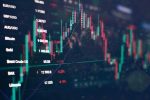By Elisabeth Kashner, CFA | August 2, 2023
In the U.S., ETF fee compression slowed dramatically in the first half of 2023. This year in the six months through June 2023, ETF expenses fell just 0.001%, one-fifth of what we would have expected based on the drops over the previous five years, when asset-weighted ETF expense ratios fell by over 0.01% per year, on average, as depicted in the chart below.
What happened?
Three things; perhaps separate, perhaps not. Flows slowed, certain equity ETF investors embraced premium products, and asset managers began raising ETF expense ratios.
Let’s start by looking at the events one by one.
Insight/2023/08.2023/08.02.2023_U.S.%20ETF%20Fee%20Compression%20Slows/01-us-etf-expense-ratio-asset-weighted-average.png?width=2147&height=1560&name=01-us-etf-expense-ratio-asset-weighted-average.png)
Source: FactSet
A tepid start to 2023
In the first half of 2023, despite strong equity returns, US ETF investors cooled their decades-long ETF buying spree.
If 2023 U.S. ETFs had continued growing at the 2017-22 rate of 12.3%/year, we would have seen $400 billion in new ETF shares through June 2023. Instead, flows in the first half hit just $215 billion. At this rate—just 6.7% growth—we can expect about $430 billion in annual flows by year-end. That would be above the 2018-19 levels but well below recent high-water marks, as shown in the chart below.
Insight/2023/08.2023/08.02.2023_U.S.%20ETF%20Fee%20Compression%20Slows/02-us-etf-flows-by-asset-class.png?width=624&height=455&name=02-us-etf-flows-by-asset-class.png)
Source: FactSet
The cooling trend has landed squarely on equity ETFs. Fixed income ETFs are still hot this year, on par with the 2020-21 level of 16.2% annualized organic growth rate. Yet equity ETFs grew at just 4.5% annualized, well off 2022’s 6.7% pace. As a result, 47 cents of every new 2023 ETF dollar have landed in fixed income. That’s impressive, especially because bond ETFs comprised just 20% of all ETF assets at the beginning of the year.
Price insensitivity
Dollars that once flowed into sector funds are now finding homes in actively managed Size and Style ETFs such as JPMorgan’s Equity Premium Income ETF (JEPI-US), which drew over $10 billion in the first half of 2023.
JEPI is well-named: Its investors pay a premium of 0.35%/year. Forty-four of JEPI’s direct competitors have lower price tags, including actively managed U.S. equity and large cap suites from Dimensional, American Century, and Cap Group. Yet JEPI is the largest and fastest-growing actively managed ETF.
JEPI’s investors are not terribly price sensitive. As a result, fee compression has reversed among actively managed size and style ETFs and has slowed for all active equity ETFs.
The chart below shows the asset-weighted average expense ratio for the major strategy groups of size and style ETFs, sorted by competitive outcomes: market share gains, losses, continued monopolization, or closure.
Insight/2023/08.2023/08.02.2023_U.S.%20ETF%20Fee%20Compression%20Slows/03-equity-size-and-style-fees-by-ytd-2023-market-share-changes.png?width=2282&height=1560&name=03-equity-size-and-style-fees-by-ytd-2023-market-share-changes.png)
Source: FactSet
As in prior years, investors choosing vanilla and strategic funds continued to gravitate to the cheapest options. But those selecting idiosyncratic approaches (e.g., single-exchange listing-focus or ESG) and active management paid more and showed less enthusiasm for cheaper options.
Asset managers turn the screws
While ETF asset managers historically cut fees to attract new clients, this year many did the opposite. For the first time in ages, ETF fee hikes outnumber cuts. First Trust and BlackRock led the way with fee hikes (or reduction of fee waivers) on popular ETFs.
Insight/2023/08.2023/08.02.2023_U.S.%20ETF%20Fee%20Compression%20Slows/04-number-of-etfs-with-fee-changes.png?width=2147&height=1560&name=04-number-of-etfs-with-fee-changes.png)
Source: FactSet
The fee action was not evenly split between equity and fixed income ETFs. Surprisingly, equity ETFs shed costs a bit more quicky than their bond counterparts, despite slower growth.
Insight/2023/08.2023/08.02.2023_U.S.%20ETF%20Fee%20Compression%20Slows/05-us-etf-expense-ratios-by-year-asset-weighted-average.png?width=2147&height=1560&name=05-us-etf-expense-ratios-by-year-asset-weighted-average.png)
Source: FactSet
What’s the story?
The trends towards slower growth, spots of price insensitivity, and fee hikes are clear. Their inter-relatedness is less so.
ETF fee hikers could think the market has hit a turning point and that investors will bear higher costs. With fewer new dollars at stake, and with less exacting clients at hand, some ETF firms may have decided that it’s time to make money off existing investors.
If so, they’re taking a risky gamble, because there’s plenty of reason to believe that JEPI’s cheerleaders and their price-insensitive peers are not the new normal. After all, the core ETF investor remains strong, and competition is intense across asset classes, categories, and investment styles.
Core strength
Ten ETFs that have dominated flows from 2018-22, all from Vanguard and Blackrock’s core lineup, offer market-cap weighted exposure to broad swaths of the equity and bond markets. These big ten cost almost nothing: from 0.03% to 0.09%/year.
A drop in the big ten’s popularity in favor of more expensive ETFs could signal broad investor willingness to drop dirt-cheap funds in favor of pricier, more complex strategies. Instead, the core suites are gaining traction on a percentage basis. Core bond ETFs are also strong on a dollar-basis.
Insight/2023/08.2023/08.02.2023_U.S.%20ETF%20Fee%20Compression%20Slows/06-flows-share-of-the-big-ten-core-etfs.png?width=2147&height=1558&name=06-flows-share-of-the-big-ten-core-etfs.png)
Source: FactSet
Dollar-wise, core equity flows are back to 2017-20 levels. Core fixed income flows are on pace to match 2021’s record. These super-cheap portfolio building blocks remain supreme.
Outside the vanilla core, trends require a bit more parsing, especially among equity ETFs, as investors shifted from sector and high dividend plays to actively managed size and style ETFs.
Thematics out, actives in
Equity ETFs come in three categories:
- Size and style, which often form the core of many investors’ strategic allocations
- Sector, which are suited to tactical use
- High dividend yield, which sometimes takes the place of bond funds when interest rates are near zero
U.S. ETF investors favored size and style ETFs in the first half of 2023, divested from sector funds, and ignored high dividend yield.
Insight/2023/08.2023/08.02.2023_U.S.%20ETF%20Fee%20Compression%20Slows/07-equity-etf-market-share-december-31-2022-and-h1-2023-flows-share-by-category-with-asset-weighted-expense-ratio.png?width=2147&height=1560&name=07-equity-etf-market-share-december-31-2022-and-h1-2023-flows-share-by-category-with-asset-weighted-expense-ratio.png)
Source: FactSet
This cooling on tactical plays such as thematic equity should have accelerated equity ETF fee compression, as size and style funds cost less on average than the others: 0.14%/year vs. 0.28% and 0.21%, respectively. But some investors chose size and style funds with above-average fees.
Plain vanilla size and style ETFs—the equity components of the big ten and their hundreds of brethren—cost just 0.09% on an asset-weighted basis. Complex selection and weighting schemes such as Strategics (factor investing) and Idiosyncratics (ESG, for example) cost more than double that, about 0.20% per year. Active management fees are nearly quadruple those of plain vanilla, now averaging 0.34%. When active gains market share, top-line fee compression slows.
Insight/2023/08.2023/08.02.2023_U.S.%20ETF%20Fee%20Compression%20Slows/08-size-and-style-etf-h1-2023-flows-versus-market-share-with-asset-weighted-expense-ratio.png?width=2147&height=1560&name=08-size-and-style-etf-h1-2023-flows-versus-market-share-with-asset-weighted-expense-ratio.png)
Source: FactSet
Can JEPI-like ETFs take over?
JEPI seems to have begun displacing cheaper value funds such as the 0.18% cost iShares Russell 1000 Value (IWD-US) and the 0.15% cost iShares MSCI USA Min Vol Factor ETF (USMV-US). Asset managers like JPMorgan may continue to promote their actively managed products on performance rather than cost. But those who live by performance can die the same way.
JEPI may not reign supreme for long because of its portfolio design. The fund offers downside protection, but it lags on the upside. JEPI’s claim to fame of limiting 2022 losses may fade with memories of that difficult year.
Insight/2023/08.2023/08.02.2023_U.S.%20ETF%20Fee%20Compression%20Slows/09-jepi-and-competitors-performance-by-half-year.png?width=2147&height=1560&name=09-jepi-and-competitors-performance-by-half-year.png)
Source: FactSet
In a strong bull market, Dimensional and American Century’s cheaper, more market-like products may once again draw the largest flows. If that happens, we can expect equity fee compression to return among actively managed size and style ETFs.
Fixed income becomes stuck income
Fixed income is another story. While investors continue migrating to cheaper funds, some asset managers have raised expense ratios—especially in the cash management vehicles. The result is stagnation in overall fixed income fees, on an asset-weighted basis.
Investor preference for ever-cheaper bond ETFs remains strong. In the first half of 2023, bond ETFs that gained market share cost just 0.12%; losers cost 0.025% more. But investor choice is only half of the cost story. Bond ETF expense ratios increased 0.001% in the first half of 2023, on an asset-weighted basis.
Here are the highest-impact bond ETF fee hikes, by revenue:
Insight/2023/08.2023/08.02.2023_U.S.%20ETF%20Fee%20Compression%20Slows/10-highest-impact-bond-ETF-fee-hikes-by-revenue.png?width=3900&height=1461&name=10-highest-impact-bond-ETF-fee-hikes-by-revenue.png)
Source: FactSet. SGOV’s net expense ratio increase was the result of the termination of part of a fee waiver. HYLS has variable “other expenses” added to the management fee.
Will they get away with it?
ETF investors have grown accustomed to sharing the benefits of economies of scale and issuer competition over the years. This year, however, there’s a wake-up call. ETF asset managers are emboldened, raising fees more often than cutting them.
Will ETF investors tolerate fee hikes? Stay tuned. The iShares changes happened at the very end of June 2023, so they’re quite new. And since FTSM’s June 1 upcharge, its flows have turned negative.
Many long-term FTSM holders have little or no unrealized capital gains, and therefore have no barriers to exit. Will they switch over to a competitor? Perhaps, for example, PIMCO’s Enhanced Short Maturity Active ETF (MINT-US, expense ratio 0.36%), BlackRock’s Short Maturity Bond ETF (NEAR-US, expense ratio 0.25%), or Janus Henderson’s Short Duration Income ETF (VNLA-US, expense ratio 0.23%). Could Dimensional’s Short- Duration Fixed Income ETF (DFSD-US, expense ratio 0.16%), become the biggest threat? DFSD had strong June and July inflows. Or will the 2023 JEPI complacency settle on FTSM’s holders?
Get some popcorn and watch the show.
Originally published on Factset, August 2.
For more news, information, and analysis, visit the Active ETF Channel.
This blog post is for informational purposes only. The information contained in this blog post is not legal, tax, or investment advice. FactSet does not endorse or recommend any investments and assumes no liability for any consequence relating directly or indirectly to any action or inaction taken based on the information contained in this article.








